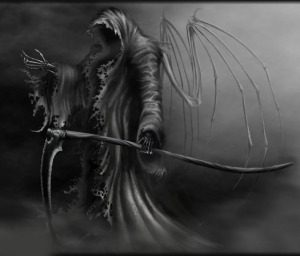 A young woman with terminal cancer made news the last couple weeks when we learned that that 29 year old Brittany Maynard had moved from California to Oregon so that she could take advantage of the state’s “Death with Dignity” law. This is a fascinating 21st Century cultural moment in America. We learned this weekend that she has indeed died.
A young woman with terminal cancer made news the last couple weeks when we learned that that 29 year old Brittany Maynard had moved from California to Oregon so that she could take advantage of the state’s “Death with Dignity” law. This is a fascinating 21st Century cultural moment in America. We learned this weekend that she has indeed died.
The first time I’d even heard about this was at the Meijer self-checkout line about a week ago where she was prominently displayed on the cover of People Magazine. The text on the cover:
A Terminal Cancer Patient’s Controversial Choice: My Decision to Die – Why Brittany Maynard, 29, plans to end her life in less than three weeks.”
On that cover is a very alive looking woman photographed we’re told on October 11. Of course I have no idea where this will lead with what has been called assisted suicide (no longer allowed in polite discourse I’m afraid, too biased and negative), but this seems a bit like a watershed moment in the increasingly secularization of American society. Such decisions may not be all that controversial in the years to come.
The reason for this can be found in the way this has been presented and publicized; you might be tempted to see this as a PR campaign for the forces of assisted suicide (old habits are hard to break). It hits all the right notes that appeal to a post-Christian, post-modern American culture with a growing percentage of “nones.” On the surface it has incredible appeal and a kind of logic 21st Century Americans find irresistible.
And it just so happens that is exactly what this is, A PR campaign, using this woman’s death to promote death. On Ms. Maynard’s website we learn that the promotion of it is in fact an initiative of an organization called Compassion & Choices; compassion and choices are not a hard sell in 2014. The organization’s self-description is in perfect post Judeo-Christian, post-modern speak:
Compassion & Choices is the leading nonprofit organization committed to helping everyone have the best death possible. We offer free consultation, planning resources, referrals and guidance, and across the nation we work to protect and expand options at the end of life.
For over thirty years we have reduced people’s suffering and given them some control in their final days – even when injury or illness takes their voice. We are experts in what it takes to die well.
If you are looking for “the best death possible,” and looking to “die well,” then these people are in your corner, as they were for Ms. Maynard. But as understandable as these sentiments may be, I’m afraid it is not so simple to sweep the ugliness of death under the rug (one liberal journalist even believes science will one day, “no doubt” vanquish death–science is the liberals’ God, almighty, omniscient, and benevolent.)
I couldn’t help but thinking as I was reading articles about this of a movie I saw recently that was inspired by a book of the same name, The Giver. Life doesn’t always imitate art, but in this case it bears a scary resemblance. In a whitewashed world all death and pain and suffering are apparently conquered. Underneath the veneer of a happy go lucky people, however, we find out that death and pain and suffering are not so easily extinguished after all. Unfortunately, this movie is probably an outlier. Compassion and choice are much easier to market.
I also noticed as I read that Ms. Maynard is a good example of a stereotypical millennial. There is never a mention of the possibility of an afterlife. Her values borrow strongly from the Judeo-Christian worldview without any apparent awareness of where these values come from:
She believed in compassion, equity, and that people would remember most how you made them feel in life. As Faulkner said, “Never be afraid to raise your voice for honesty and truth and compassion against injustice and lying and greed. If more people all over the world would do this, the world would change.”
There is never a hint that maybe life, even our own, is not ours to take (of course, if the material is all there is, I can do what I damn well please with my life). Or that maybe there might be some downside, some unintended consequences, to this idea that we can tidy up the blatant ugliness that is death. And make no mistake, death is ugly, as ugly as ugly gets. As I often, probably too often, tell my family, we are all slowly but surely rotting. Entropy takes no prisoners. No, there is no dignity in death.
And death is a strange thing. There is a portion of humanity that although they know the Grim Reaper is coming, relentlessly, never give a thought about what death might mean; they never ask the question, why is there this thing we call death after all? For them ignoring death or finding some way to sanitize it is very appealing. The other part of humanity, with very good reason in my estimation, refuses to let death be a brute fact, something that requires no explanation; its meaning must be addressed. If there is any meaning.
As for assisted suicide, given the pace of social change in America, we may find in the not too distant future that the Hippocratic Oath, something all doctors until recently swore to, will become as passé as traditional marriage, you know, mom, dad, married, kids.

